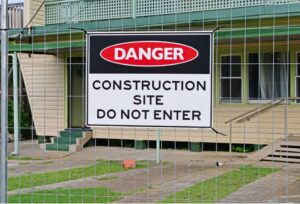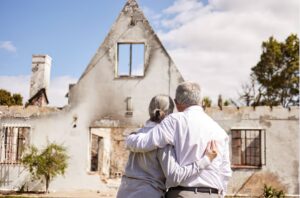How Long Will the Fire Damage Restoration Cleaning Process Take?
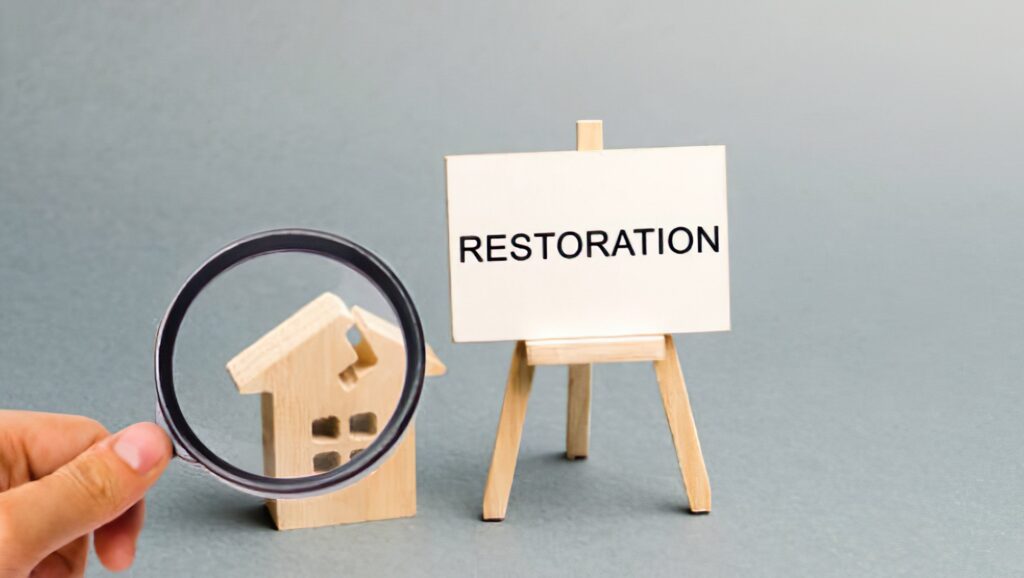
Table of Contents
Introduction
When a fire strikes, the immediate aftermath can be overwhelming. Beyond the visible destruction, lingering smoke, stubborn soot, and potential hidden hazards can make the recovery process feel daunting. How long will it take to restore your property to its former glory? What steps are involved in smoke and fire damage restoration, and how can you ensure the job is done thoroughly and efficiently?
Understanding the timeline for fire damage restoration cleaning is crucial—not only for setting realistic expectations but also for reducing stress during an already challenging time. Whether you’re dealing with minor smoke damage or extensive property destruction, a clear grasp of the process can help you make informed decisions and get back to normal life sooner.
In this guide, we’ll break down the key factors that influence restoration timelines, from the severity of the damage to the specific cleaning methods required, including soot cleaning and decontamination processes. By the end, you’ll know what to expect at every stage of restoration and how to accelerate the process while ensuring the safety and integrity of your home.
Ready to turn the page on fire damage and move forward with confidence? Let’s dive in.
1. Factors Influencing the Duration of Fire Damage Restoration
How long does it really take to restore a property after a fire? The truth is, there’s no one-size-fits-all answer. The timeline depends on several key factors, each playing a crucial role in the restoration process. Understanding these elements can help you better prepare and set realistic expectations for your smoke and fire damage restoration journey.
Severity of Fire Damage
The extent of the damage is the most significant factor. Was the fire contained to a small area, or did it sweep through multiple rooms?
- Minor Smoke Damage: If the fire was minimal, causing mostly smoke and soot buildup, the restoration process could be completed in days. Soot cleaning and deodorizing are typically the primary tasks.
- Extensive Structural Damage: If the fire compromised walls, floors, or even the roof, the timeline extends significantly. In such cases, structural repairs, decontamination, and thorough safety inspections become necessary, leading to a more complex and lengthy restoration process.
Size of the Affected Area
The larger the affected area, the longer the cleanup and restoration. It’s one thing to restore a single room and another to rehabilitate an entire property.
- Small Rooms or Isolated Areas: Smaller spaces can usually be cleaned and restored more quickly, especially if the damage is superficial.
- Entire Property Damage: When the fire impacts multiple rooms or the entire building, it requires a systematic approach—removing debris, cleaning soot, repairing structures, and conducting comprehensive decontamination. This scale of work naturally extends the timeline.
Type of Building Materials Affected
Not all building materials are created equal when it comes to fire damage. Some can be cleaned and restored, while others must be replaced entirely.
- Restorable Materials: Hard surfaces like metal or tile may only need smoke and soot cleaning.
- Replaceable Materials: Porous materials, such as drywall or insulation, often absorb smoke odors and hazardous contaminants, making replacement necessary. This can add significant time to the restoration process.
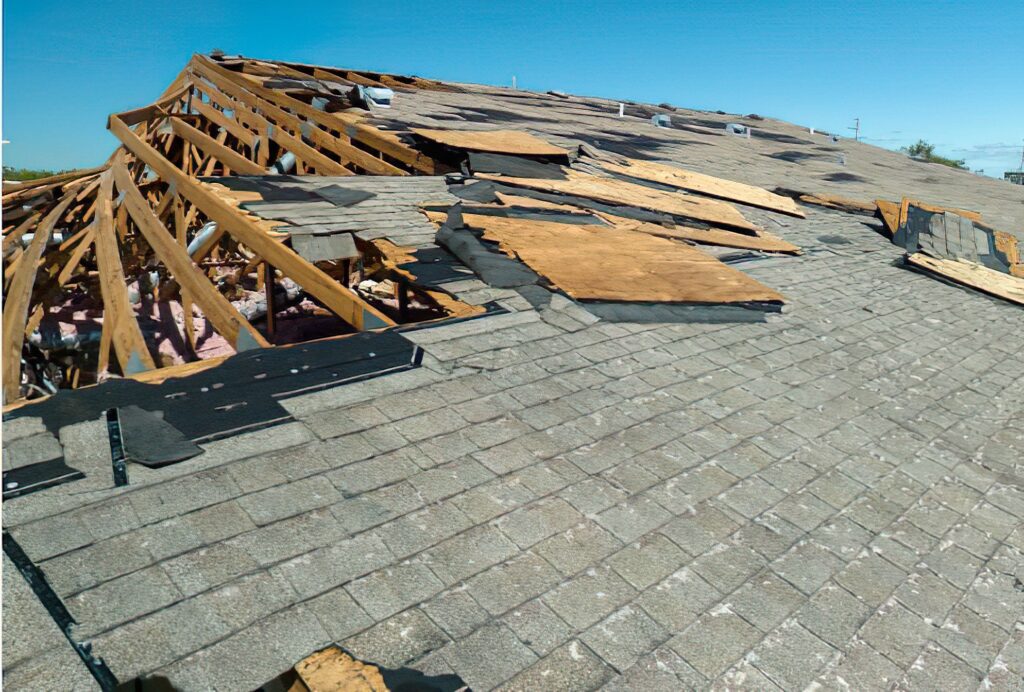
Water Damage from Firefighting Efforts
It’s easy to overlook the impact of water used to extinguish the fire. However, water damage introduces additional challenges like mold growth and structural weakening.
- Drying and Dehumidification: Before any fire damage restoration can begin, water removal and thorough drying are essential. High-powered fans and dehumidifiers are often required, which can take several days to weeks, depending on the extent of water damage.
- Mold Prevention and Decontamination: If drying isn’t completed promptly, mold can set in, leading to additional decontamination and cleaning requirements.
Each of these factors plays a pivotal role in determining how long smoke and fire damage restoration will take. By understanding these elements, you’re better equipped to manage expectations and work effectively with your restoration team.
Curious about what happens next? In the following section, we’ll break down the typical time frames for each stage of the fire damage restoration process, giving you a clearer picture of what to expect.
2. Typical Time Frames for Each Stage of Fire Damage Restoration
Wondering how long each step of the fire damage restoration process takes? While every situation is unique, understanding the general timeline for each stage can help you better plan your recovery. From the initial inspection to the final repairs, each phase has its own set of tasks and challenges. Here’s what you can expect.
Inspection and Assessment
Before any cleaning or repairs begin, a thorough inspection is crucial. This step determines the extent of smoke and fire damage, including hidden issues like soot buildup and structural weaknesses.
- Timeframe: Typically, this takes anywhere from a few hours to a full day, depending on the size of the property and severity of the damage.
Purpose: The assessment helps restoration experts create a detailed plan of action, including cost estimates and timelines.
Board-Up and Roof Tarp Services
If the fire has left your property exposed to the elements or vulnerable to unauthorized access, securing the site is the next priority.
- Timeframe: This process usually takes a few hours but may extend to a day for larger properties or complex structural damage.
Purpose: Board-up services protect your property from further damage, while roof tarping prevents water infiltration, preserving the integrity of the building.
Water Removal and Drying (if necessary)
Did you know that water damage is a common side effect of firefighting efforts? If water was used to extinguish the flames, it’s crucial to remove it promptly to prevent mold growth and structural deterioration.
- Timeframe: Water extraction can take 1 to 3 days, depending on the volume of water and affected areas. Complete drying and dehumidification may require an additional 3 to 7 days.
- Methods Used: Industrial-grade dehumidifiers and high-speed air movers are used to accelerate the drying process.
Smoke and Soot Removal
Smoke and soot can penetrate walls, ceilings, and personal belongings, leaving behind stubborn stains and lingering odors. Effective soot cleaning is essential to restore the property’s appearance and air quality.
- Timeframe: This step typically takes 3 to 7 days, depending on the severity of the soot buildup and the size of the affected area.
Techniques Used: Specialized cleaning agents and advanced equipment like air scrubbers and ozone machines are used to eliminate smoke odors and residues.
Cleaning, Sanitizing, and Deodorizing
Once the soot is removed, a thorough cleaning and sanitization process is necessary to eliminate any remaining contaminants. This step also involves deodorizing the property to ensure a safe and pleasant living environment.
- Timeframe: Depending on the extent of smoke and fire damage, this can take 2 to 5 days.
Focus Areas: Walls, ceilings, floors, and personal belongings such as furniture and clothing all require careful cleaning and deodorization.
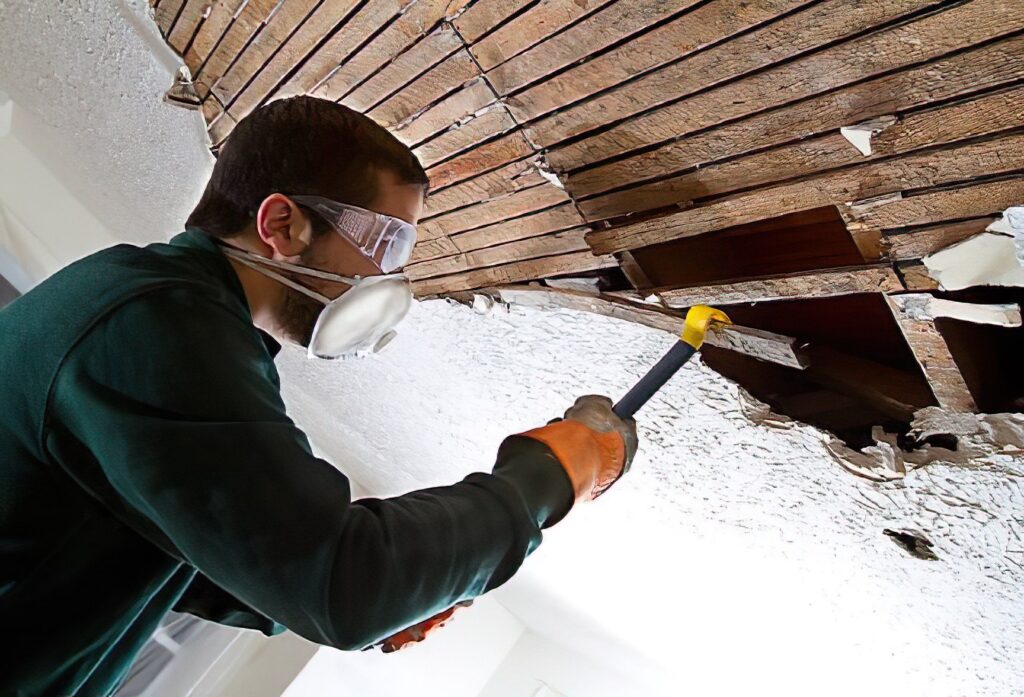
Restoration and Repairs
The final stage involves repairing structural damage and restoring your property to its pre-fire condition. This can range from minor touch-ups to major reconstruction, depending on the damage.
- Timeframe:
- Minor Repairs: 1 to 2 weeks (e.g., painting, carpet replacement).
- Major Reconstruction: Several weeks to months, particularly for extensive structural repairs or custom work.
Common Tasks: Replacing drywall, installing new flooring, repairing damaged roofs, and repainting affected areas.
Understanding the timeline for each stage of smoke and fire damage restoration helps set realistic expectations and reduces the stress of uncertainty. Keep in mind that these are typical timeframes and can vary based on the specific circumstances of your property damage.
Want to know how you can speed up the process and get back to normal life sooner? In the next section, we’ll explore effective strategies to minimize delays and streamline your fire damage restoration journey.
3. Ways to Speed Up the Fire Damage Restoration Process
No one wants to be displaced from their home or business longer than necessary. So, how can you expedite the fire damage restoration process without compromising on quality or safety? While some delays are unavoidable, there are several proactive steps you can take to minimize downtime and get back to normal life faster. Here’s how.
Hiring Professional Restoration Services
One of the most effective ways to speed up the restoration process is by choosing experienced professionals who specialize in smoke and fire damage restoration. But why does this make such a difference?
- Expertise and Efficiency: Certified restoration teams have the knowledge and tools to tackle even the most challenging soot cleaning and decontamination tasks. Their experience enables them to work more efficiently, avoiding costly mistakes or delays.
- Advanced Equipment and Techniques: From industrial-grade air scrubbers to ozone machines for smoke odor removal, professionals use state-of-the-art equipment that speeds up cleaning and drying processes.
- Comprehensive Services: A full-service restoration company handles everything—from initial assessment to final repairs—streamlining the process and eliminating the need to coordinate multiple contractors.
Tip: Look for companies with certifications from industry leaders like the Institute of Inspection, Cleaning and Restoration Certification (IICRC) to ensure high standards of service.
Prompt Action After the Fire
The sooner you act, the better. Delays in starting the restoration process can lead to secondary damage, such as mold growth or permanent staining from soot.
- Immediate Damage Assessment: Contacting a restoration company as soon as possible ensures a prompt inspection and the creation of a tailored action plan.
- Quick Water Extraction and Drying: If water was used to extinguish the fire, swift removal and drying are crucial to prevent mold and structural damage.
- Early Soot Cleaning and Decontamination: Soot can cause permanent discoloration on walls and furniture if not cleaned promptly. Early decontamination also reduces potential health risks from lingering smoke particles.
Pro Tip: Don’t attempt DIY cleaning, as improper methods can worsen the damage. Trust the experts for safe and effective results.
Clear Communication with Insurance Providers
Navigating the insurance claims process can be a major bottleneck if not handled efficiently. Clear and proactive communication with your insurance provider can significantly reduce delays.
- Document Everything: Take photos and videos of the damage immediately after the fire. Detailed documentation supports your insurance claim and speeds up approval.
- Work with a Restoration Company Experienced in Insurance Claims: Reputable restoration companies often have dedicated teams to assist with insurance paperwork, ensuring accurate and timely submission.
- Maintain Open Communication: Regular updates and prompt responses to insurance adjusters’ requests prevent unnecessary hold-ups in claim approvals.
Insider Tip: Choose a restoration company that works directly with your insurance provider to streamline the claims and payment process.
Taking these proactive steps can dramatically reduce the time needed for smoke and fire damage restoration. By choosing professional help, acting quickly, and maintaining clear communication with your insurance provider, you’ll be back in your home or business sooner than you might expect.
Curious about potential challenges that could still cause delays? In the next section, we’ll cover common obstacles and how to navigate them effectively.
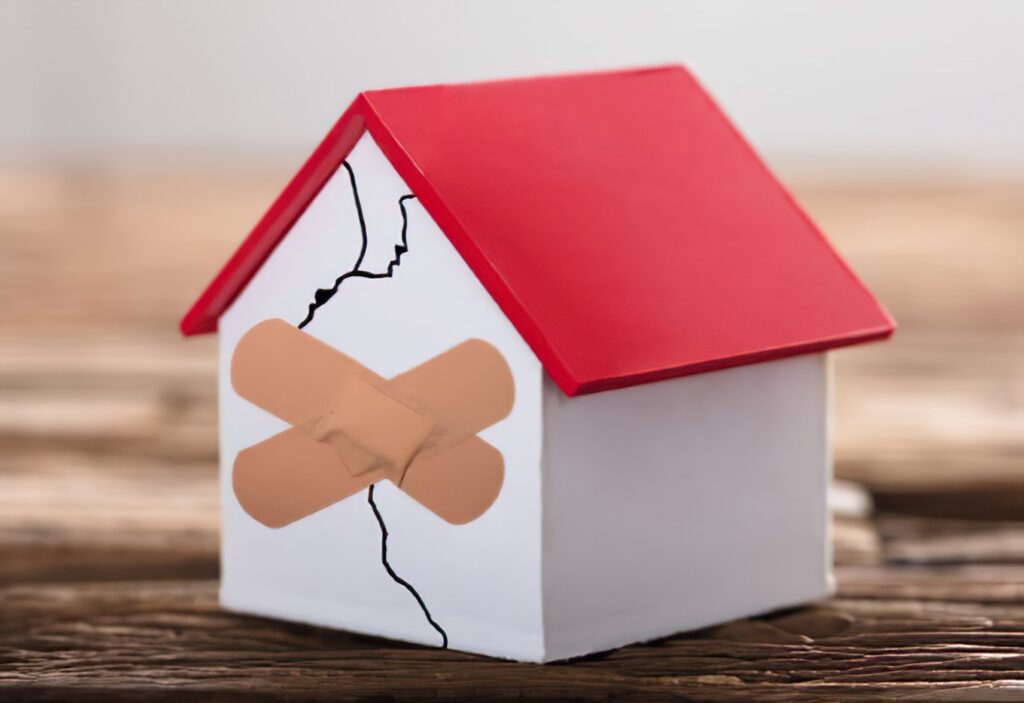
4. When to Expect Delays in Fire Damage Restoration
Even with the best planning and the most efficient team, delays can sometimes occur during fire damage restoration. But what causes these setbacks, and how can you prepare for them? Knowing the potential challenges ahead of time allows you to manage expectations and navigate the process with less stress. Let’s explore some common reasons for delays and how they might impact your timeline.
Complex Structural Repairs
Has the fire compromised the structural integrity of your property? If so, expect more time for repairs. Structural issues aren’t just about replacing walls or roofs—they often involve in-depth inspections, permits, and specialized work.
- Building Permits and Inspections: Major reconstruction, such as roof repairs or wall rebuilding, requires permits from local authorities. Waiting for approvals and undergoing multiple inspections can delay progress.
- Specialized Contractors Needed: Structural repairs may involve electricians, plumbers, or engineers. Coordinating their schedules can add time, especially if their services are in high demand.
- Safety Concerns: In severe cases, properties with significant structural damage require additional safety measures during restoration, further extending timelines.
Tip: Choose a restoration company familiar with local building codes to streamline permit applications and inspections.
Specialized Cleaning Requirements
Not all fire damage is equal. In some cases, the fire may have released hazardous materials or left behind persistent smoke odors that require specialized decontamination and cleaning methods.
- Biohazard Decontamination: If the fire involved synthetic materials, chemicals, or asbestos, specialized biohazard decontamination is necessary. This includes careful removal, containment, and disposal of hazardous substances.
- Persistent Smoke Odors: Lingering smoke odors embedded in walls, ceilings, and fabrics require advanced deodorization techniques, such as ozone treatment or thermal fogging. These methods take longer but are crucial for eliminating harmful smoke particles.
- Deep Soot Cleaning: Severe soot contamination demands specialized equipment and cleaning agents to effectively remove residue without damaging surfaces.
Pro Tip: Ask your restoration company about their experience with hazardous material removal and advanced deodorization techniques to avoid delays due to specialized cleaning needs.
Supply Chain Issues and Contractor Availability
Did you know that restoration timelines can be affected by external factors like supply chain disruptions and contractor availability? These challenges can be frustrating, but they’re often beyond anyone’s control.
- Material Shortages: Rebuilding damaged areas requires construction materials such as drywall, insulation, and flooring. Global supply chain issues can lead to delays in sourcing these materials.
- Contractor Availability: Skilled labor shortages, particularly in high-demand areas or during peak seasons, can slow down the restoration process. This is especially true for specialized tasks like electrical work or custom carpentry.
- Unexpected Repairs or Discoveries: During the restoration, hidden damage may be uncovered, requiring additional materials or specialized contractors, which can further extend the timeline.
Insider Tip: Choose a well-established restoration company with strong supplier relationships and a reliable network of subcontractors to minimize delays related to material shortages and labor availability.

Delays in fire damage restoration can be frustrating, but understanding the potential obstacles helps you better prepare and manage expectations. By staying informed and working with experienced professionals, you can navigate these challenges and keep your restoration project on track.
Want to ensure a smoother restoration experience? In conclusion, we’ll recap key takeaways and offer final tips to help you make informed decisions throughout your fire damage restoration journey.
Conclusion: Moving Forward with Confidence After Fire Damage
Facing the aftermath of a fire is never easy, but understanding the fire damage restoration process can make the journey a little less overwhelming. By knowing the factors that influence restoration timelines, the typical stages involved, and the potential delays to watch out for, you’re better prepared to navigate the challenges ahead.
But where do you go from here? The key to a faster, smoother recovery lies in proactive decision-making. Whether you’re choosing a smoke and fire damage restoration company, managing insurance claims, or planning repairs, every step matters. By acting swiftly and working with experienced professionals, you can minimize downtime and restore your property safely and efficiently.
Remember, fire damage restoration isn’t just about rebuilding walls or cleaning soot. It’s about reclaiming your space, your comfort, and your peace of mind. With the right approach and the right team by your side, recovery is not just possible—it’s achievable.
Are you ready to take the next step? If you need help with soot cleaning, biohazard decontamination, or comprehensive fire damage restoration, don’t hesitate to reach out to trusted experts. The road to recovery may be challenging, but with the right guidance, you can move forward with confidence and rebuild stronger than before.
Thank you for trusting us to guide you through this process. Stay safe, stay resilient, and remember—you’re not alone on this journey to restoration.

